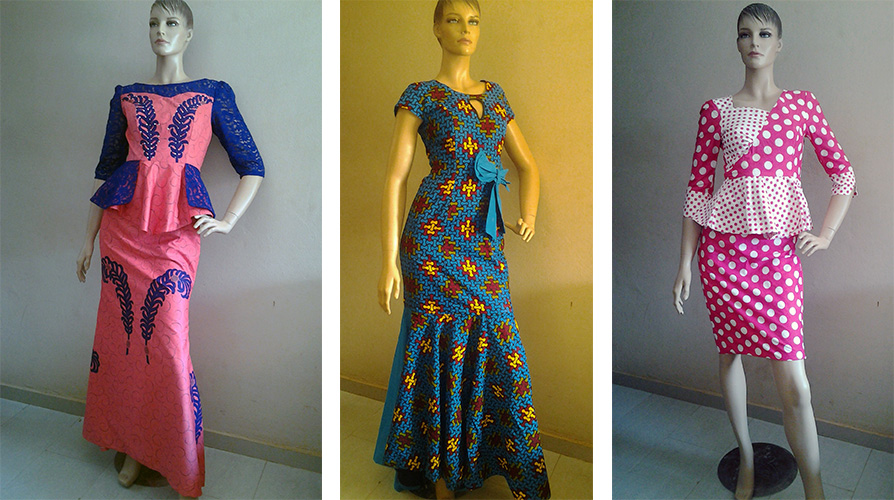Bolanle Dahunsi first started sewing at age 12 or 13, helped by her mother, who owned a sewing business in Nigeria. After discovering a career in banking wasn’t the right fit for her, Bolanle attended a fashion institute and started her own fashion design business, creating custom clothing for clients.
“One of the things I liked was that a lot of what I made clients wore for a really long time, which is quite different from ready-to-wear clothes,” Bolanle said.
She explained that people often buy ready-to-wear clothes from the store just to wear an item only a few times before discarding it. Maybe the pants don’t fit quite right, or the dress isn’t appropriate for many situations. Custom-made clothes are different.
“A lot of thought goes into making something specifically for you,” Bolanle said. “We want the clothes to look good on you, but we also want it to meet your needs at that particular point in time. And we want you to still be able to use it for other things after that.”
After two and a half years running her business, Bolanle decided to explore how her knowledge of custom clothing could help people buy ready-to-wear clothing that they’ll wear longer than many fast fashion items.
She completed her master’s in computer science with a minor in apparel design at Louisiana State University. Then she came to the University of Minnesota for her Ph.D. in apparel design, drawn by the Wearable Technology Lab and Dr. Lucy Dunne’s work on improving clothing recommendation systems.
Bolanle’s research focuses on these recommendation systems, like when a website suggests other items of clothing to buy based on what you just added to your cart. She wants to improve these automated suggestions by understanding who the consumer is and how they think, and what fashion stylists look at when making recommendations to clients.
Fashion in Nigeria
The fashion industry in Nigeria is very different from the U.S., according to Bolanle. She explained that getting clothes made for you is the norm in Nigeria.
“If I’m going to a wedding, I don’t just go into the store and buy an outfit,” Bolanle said. “I actually take fabric and go to a seamstress or tailor.”
She highlighted the concept of aso-ebi, or clothing for your family. On some occasions, the host will buy a particular fabric in bulk and send pieces to all members of the family. At the party, everyone will be wearing the same fabric but in different custom styles.
But Nigerians don’t wear the custom outfit for just one occasion. It’s common for people to incorporate the pieces into their existing wardrobe, wearing the new dress to church or using the jacket to breathe new life into their work clothing.

Gaining Teaching Experience
Bolanle was able to share her knowledge of Nigerian fashion at the Osher Lifelong Learning Institute (OLLI), a learning community for people aged 50 and older run by the College of Continuing and Professional Studies. OLLI hosts several international graduate students each year through a partnership with the Culture Corps program, encouraging them to share their unique perspectives and insights and enrich cross-cultural understanding.
Bolanle developed her own course, “Cultural Influences and the Nigerian Fashion Industry,” which she taught for two semesters. Each class session focused on one topic, from hair accessories and the fashion training system to how people dress for events like weddings and naming ceremonies. Many included a guest speaker from the Nigerian fashion industry.
This was Bolanle’s first time designing a course. She mainly worked as a research assistant during her Ph.D. program, and when she did have a teaching assistant position, it was focused on grading, not actually leading a class.
She credits her work at OLLI with helping her stand out in the academic job market.
“A big part of the application is explaining your teaching philosophy,” Bolanle said. “Having taught the class on Zoom was really useful in developing my teaching statement and providing examples of things I had to do in order to make my class engaging for students.”
Bolanle will be an assistant professor at Oregon State University next fall.
“Designing a course from scratch for OLLI was an invaluable experience,” Bolanle said. “It gave me what I was missing — developing coursework, slides, and a syllabus.”
